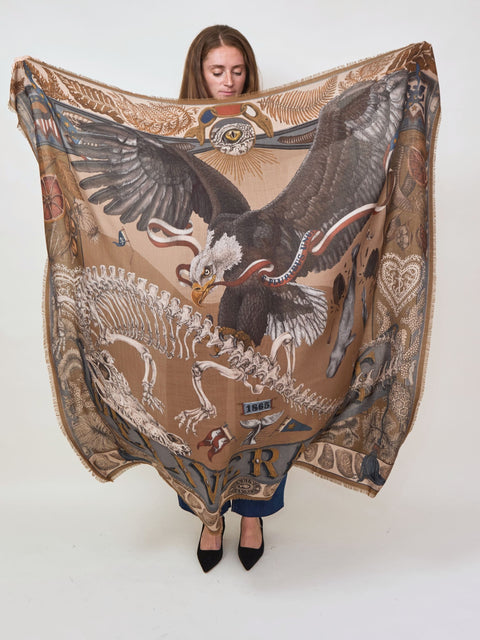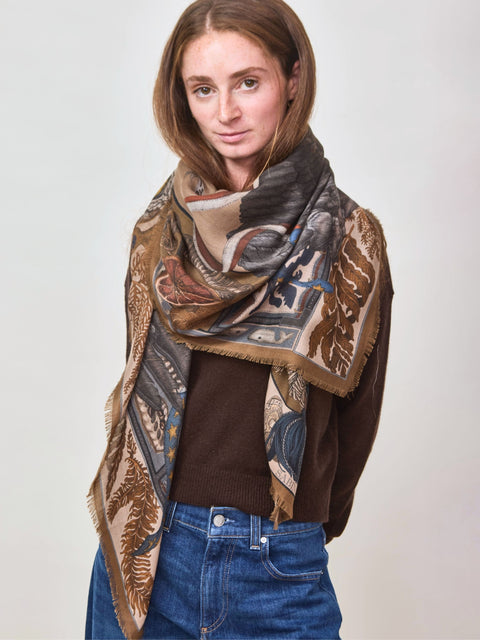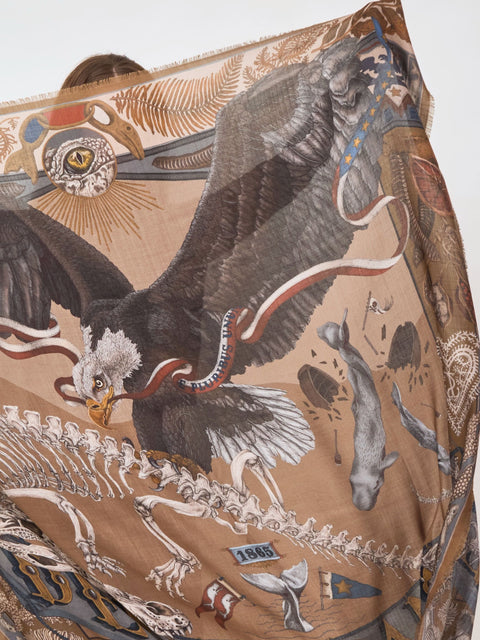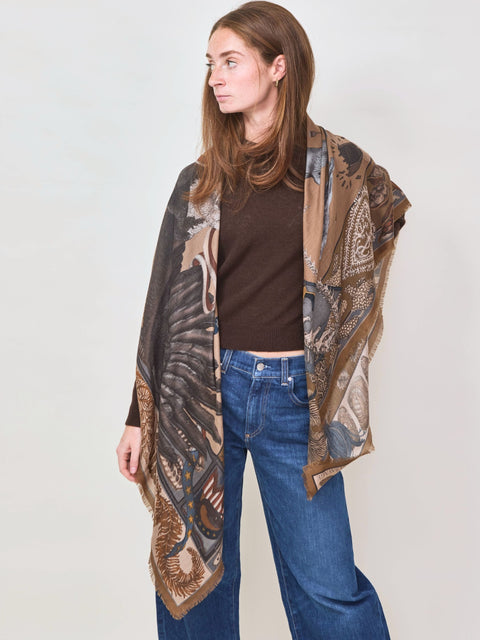



Scrimshaw Skeleton, 135cm wool/silk, caramel
Sabina Savage’s Wild Americana collection looks to the secret symbolism of nature, as seen through the sketchbook of a traveling naturalist. This collection is an informal sequel to her previous collection, The Naturalist’s Handbook. True to form, Savage’s imagination is the catapult for a rich storytelling process. Her fictional naturalist returns, this time making his way across America where he is influenced by the people that take him in: The Lakota people, Fraternal societies, the Cherokee people and the sailors of Nantucket. This collection reflects an intersection of the science of naturalism and the symbols and stories of those mentioned above. Spirituality, science and nature come together from their own corner to bring us to common ground that Savage hopes we will agree upon.
“My collection recruits these creatures as powerful symbols, standing for faith in nature, hopeful resilience, and issuing a plea for kinship and charity in preserving our natural world.” - Sabina Savage
Measuring 135cm sq (appr. 53"sq), 70% wool, 30% silk with fringed edges, dry clean only.
Every Sabina Savage design is hand illustrated, telling the story of the collection through the composition and details. The scarves are drawn in full, and the four corners of each scarf hold individual elements, ensuring the wearer will display a different feature however the scarf is folded. Each illustration takes around six weeks to complete.
The Scrimshaw Skeleton
9th April, 1865: ‘The weary mariners cry and point as the ancient ship creaks and lurches on the swelling tide. With throats unslaked, with black lips baked, their voices quiet as the impressive wingspan of the bald eagle passes overhead with a skeletal catch in his impressive talons. Certain Mother Nature has sent an omen to retaliate their sins against the seas, the sailors begin to toss their precious scrimshaw overboard, returning it to the ocean. ‘Quod superius sicut quod infers’, (As above, so below)’ - A.S.
Savage’s first point of inspiration in this design is Samuel Taylor Colerdige’s The Rime of the Ancient Mariner in its caution to respect our natural world. The skull & bones are a primary reference from American fraternal art in which they symbolize encouragement for virtuous living and a reverence for life. The variety of skeletal elements (from dried fruit & seedpods to skeletal coral) all serve as reminders to protect our natural world. This design is a sequel to The Alligator’s Empire from The Naturalist’s Handbook: the Eye of Providence is from the original alligator at the top of the design. This illustration highlights the plight of whales in the 19th century with references to scrimshaw work and carved bones throughout the design. 1865 notes the end of the Civil War, but also a point in US whaling history in which the industry faced significant blows.


